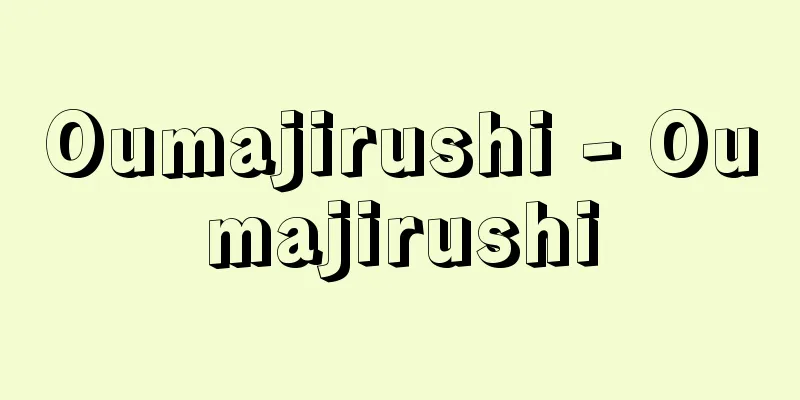Meals - Meals

|
Humans habitually eat their main food for survival at roughly the same times each day. The time, number of meals, content, and eating style vary depending on the era and society. Unlike the foraging of animals, it is more strongly influenced by cultural factors. During celebrations, festivals, and other events, it is common for foods different from everyday life to be eaten in different ways, and this custom has developed in many ethnic groups. Currently, it is common internationally to eat three meals a day: breakfast, lunch, and dinner, which corresponds to a social system in which most of the day is spent active and most of the night is spent resting. Therefore, even within the same society, meal times and frequency often differ depending on status and occupation. In ancient Japan, people ate two meals a day, breakfast and dinner, but at the beginning of the Kamakura period, this shifted to three meals a day among the imperial court and aristocracy, and three meals a day became common during the Edo period. During this transition, people would eat snacks between breakfast and dinner, which were called different things depending on social class, such as chujiki (middle meal), tenshin (dim sum), gonzui (drinking), and hijiki (non-meal). Two meals a day was common among Chinese farmers. In India, people mainly ate two meals, before noon and after sunset, and they drank milky tea in the early morning and evening. Two meals a day was also common in Arabia. In Europe, the ancient Greeks ate three meals a day, and the Romans also ate three meals a day. After the period of two meals a day in the Middle Ages, meal times and frequency changed rapidly, and became more or less fixed as they are today. Generally speaking, aristocrats ate fewer meals than peasants, regardless of time or region. Also, there are important meals throughout the day. Dinner is generally a large meal eaten slowly and in close company. However, in some countries, such as Spain, lunch is a large meal that is eaten slowly. Meals were usually eaten together at the same time (communal eating) by family or groups. People usually gathered around the table or something similar, eating together. There are individual meals such as the Japanese meimeizen, but these are similar in the sense that they involve eating together. Meal systems can be divided into two types: the Japanese type, where the meal begins with all the dishes served on each person's plate, and the Western type, where the main dish is placed directly on the table and each person takes their portion. In the former, all the dishes are served at the beginning, while in the latter, dishes are often brought to the table one after the other. However, in Japan too, it is thought that food was originally shared at the table, and this is the more common system. For special occasions, different foods are prepared than for everyday life and eaten in different ways. For example, glutinous rice, which is eaten almost nationwide in Japan during New Year's, is thought to have been a common food in ancient times, and was used as an offering to the gods (ancestral deities) during festivals, and this became established. People also eat this food, so there is a strong awareness of eating together with the gods (or the absolute beings that represent them) (gods and humans eating together). Gods are often also thought of in everyday meals. The custom of offering food or rice to the Shinto altar or Butsudan before meals is testament to this. [Shigeru Otsuka] JapanChanges in dietThe lineage and transition of the Japanese diet must be understood in relation to the natural environment, lifestyle, production activities, and society, and there are many problems. Documents have been available since the Jomon period. Of the animal foods excavated from shell mounds and ruins from the Jomon period, over 550 types of shellfish (over 350 types), fish (over 70 types), and beasts (over 70 types) have been relatively well preserved. These have been excavated with a regional flavor. Most of the beasts found are wild boars and deer, but in some regions, bears, antelopes, monkeys, raccoon dogs, rabbits, foxes, and badgers have also been found. As for fish, herring and sea bass are found in Hokkaido, red sea bream, tuna, and bonito from Sanriku to Kanto, red sea bream, Spanish mackerel, pufferfish, and conger eel are found in the Seto Inland Sea, and sharks are also commonly found in Kyushu, and crucian carp, carp, catfish, and soft-shelled turtles have also been found in inland areas. The shellfish that remain are mainly clams, oysters, and cockles, and reflect the natural environment of each region. While most plant-based foods have disappeared, chestnuts, acorns, and walnuts remain relatively intact at ruins, and melons, rice, buckwheat, barley, wheat, barnyard millet, adzuki beans, mung beans, and perilla have been discovered in ruins dating back to the end of the Jomon period, suggesting that Japan's major cultivated plants were already being used as food at this time. In terms of cooking, animal products are thought to have been boiled, roasted, or smoked, and the presence of stone plates and grinding stones suggests that plant-based foods were also eaten in powder form. Furthermore, in the later and final Jomon periods, storage pits were built in western Japan primarily for acorns, and starchy foods appear to have been used in a planned manner. What is noteworthy about the Yayoi period is the establishment and spread of wet rice cultivation, and salt production also began in western Japan from the middle of the Yayoi period. The production of salt means that the diet changed to be based on plant-based foods, and food was seasoned. This also shows that food acquisition became centered on agriculture. Meanwhile, chopsticks are not seen in the eating utensils of this period, and wooden spoons and ladles are the main ones, and by the end of the Yayoi period, there was a tendency for uniform high-rise and bowl-shaped utensils to increase, suggesting the spread of food that was served on a plate. As for the method of cooking rice, there was a jar-shaped earthenware with a hole in the bottom from the early Yayoi period, and there is a theory that this was used to cook steamed rice, but it is more likely that in this period, it was eaten in a way similar to zosui. Rice cannot be cooked without a steamer, and this did not appear until the latter half of the Kofun period. Up until the first half of the Kofun period, only hearths could be found within the remains of houses, but in the second half, i.e. the 6th century, hearths appeared in various places, and at the same time full-fledged steamers began to appear. As for eating utensils, spoons and ladles have been excavated from Yayoi period ruins, but the Gishi Wajinden states that "people ate with their hands using a hut (a high bowl) to eat and drink," which means that they ate with their hands. As for chopsticks, the Kojiki contains an entry (Volume 1) about Susanoo-no-Mikoto seeing chopsticks floating down the river and realizing that there were houses upstream, which shows that they were being used as early as the beginning of the 8th century. From the Kofun period to the Nara period, when centralization progressed, we can learn about the contents of meals from various records and wooden tablets excavated from the sites of public buildings. In the Kojiki, rice, millet, red beans, wheat, and soybeans are listed as the five grains, while in the Nihon Shoki, rice, millet, barley, wheat, and beans are listed, with grains being the staple and regular food. Rice was made into kowaii, katakayu (cooked rice common today), shirukayu (rice porridge today), komizu (similar to gruel), hoshii (preserved food), and roasted rice, and side dishes included vegetables, fish, shellfish, seaweed, bird and animal meat, and various nuts. There are also records of sake, including types such as Sumizake (clean sake), Nigorizake (cloudy sake), Kosake (sweet sake), Shiroki (white sake), Kuroki (black sake), Katazake (difficult sake), and Kasu (lees). Vinegar was also produced, and a wide variety of condiments such as Hishio (soy sauce), Miso (unpasteurized soy sauce), and Kuki (a type of soybean paste similar to natto) were made, as well as processed foods such as Sushi (nare-zushi), Shishibishio (soy sauce made from meat), Kitai (dried fish and shellfish), Suwayari (dried fish), Katsuo (dried fish), pickles soaked in salt, soy sauce, and lees, and So (dairy products). Meals were generally given twice a day (breakfast and dinner), and officials were provided with food (such as rice) by the government according to their status and the type of work they did, under the name of breakfast and dinner allowances. There was a wide variety of food in this period, and meals appear to have been plentiful, but records only belong to officials and aristocrats, and judging from the Manyoshu and other sources, the meals of common people appear to have been poor. The Heian period was basically the same as the previous era, but the types of rice and porridge that appear in records are more varied. Tsuyomeshi is pronounced "Kohachiihi" (Wamyoruijusho), and was served as the official dish at the Emperor's offerings and festival banquets. Katagayu (hard porridge) is also called himei (princess's meal) and began to be used as an official meal at the end of the Heian period. At banquets at the Imperial Court and among the nobility, meals were served in a seated or shared table style, and a wide variety of food was served, including Chinese sweets. At banquets, chopsticks were used simultaneously in the right hand and spoon in the left hand, and the host and guest would tap the plate with their chopsticks before the guests all picked up their chopsticks at the same time. It was also customary to stand the chopsticks up in the rice when stopping to eat. Later, the rise of the samurai and the spread of Buddhism (especially Zen Buddhism) had a major impact on the way people ate. With the rise of the samurai, tributes to the nobility became scarce, and the nobility's meals contained less fresh food. Towards the end of the Kamakura period, with the spread of Zen Buddhism, hime-meshi and porridge became more common. In the Muromachi period, rice meals were served in parallel, such as tsuyo-meshi and hime-meshi, but as hime-meshi became more common from the previous era, in the Edo period, hime-meshi became the standard, almost as it is today, and tsuyo-meshi became a ceremonial meal. In the Kamakura and Muromachi periods, vegetarian cuisine called dim sum prepared by monks developed and spread, and tea drinking also became widespread. Udon, somen, yokan, and tofu became available for eating, and the production of bonito flakes, kamaboko, natto, and konnyaku also became widespread. During the Kamakura period, mortars and graters became widespread and cooking methods gradually became more complex while at the same time cooking became more formalized, and during the Muromachi period the prototype of what we know as Japanese cuisine today was formed, and etiquette for cooking and eating was established. This is where honzen cuisine developed, and in the Edo period many cookbooks began to be published. During the Edo period, Chinese and Nanban cuisine were also influential, and cooking methods developed further, mainly among samurai and townspeople, and by the late Edo period the number of restaurants in towns increased. It was also during this period that sweet potatoes became a food ingredient and played an important role. Later, during the Meiji period, Western cuisine had a major influence on this, leading to various changes. [Naoyuki Ogawa] Number of mealsIn Japan, there was a long period when eating two meals a day was the norm. On wooden tablets excavated from the site of Heijo Palace, there is one that reads "regular meals, morning and evening," and the words "morning" and "evening" appear in prayers. In "Musha Monogatari" by Hojo Ujiyasu from the Muromachi period, it is written, "Generally, humans, high and low, eat twice a day," which shows that two meals a day was the norm in this period as well. Three meals a day are recorded as having been practiced at the Imperial Court in "Kinpisho" (completed in 1221), a book of court etiquette and customs from the early Kamakura period, but it is thought that eating three meals a day became widespread during the Edo period. However, even in the Edo period, the stipends of samurai were based on two meals a day, with one meal being two and a half cups of rice, and five cups per day being the standard. Of the three meals a day we currently have, breakfast, lunch, and dinner, lunch is based on the "kanjiki" (a snack between meals) that appears in records from the Nara period. As mentioned above, at that time, the standard was to eat two meals a day, but government officials and laborers who did hard labor were given snacks in addition to the two meals in the morning and evening. This can be seen in the Nihon Ryōiki and other sources, and we can see that the modern-day lunch originally became necessary depending on the type of work. During the Kamakura and Muromachi periods, the word "gosho" meaning lunch was used, and it seems that eating lunch was becoming widespread. However, there are also descriptions like the one in "Musha Monogatari" mentioned above, so it is hard to imagine that lunch had become a common practice. It is said that three meals a day became the general eating habit in the mid-Edo period, but in farming, mountain, and fishing villages where labor was intense, it seems that in addition to three meals, it was also customary to eat light meals as snacks (kanshoku) before breakfast, between breakfast and lunch, and between lunch and dinner. Snacks were not eaten regularly, but were usually eaten during busy periods, and are called various names in different regions, such as kobiru and kenzui. Kobiru means small lunch, meaning a light midday meal, and is used mainly in eastern Japan, while kenzui is a Go-on pronunciation of "kanshoku" (snack), and is found mainly in western Japan, as well as appearing in various records. [Naoyuki Ogawa] Hare and KeOne of the important dietary norms for Japanese people is the distinction between hare and ke. Hare refers to formal occasions such as festivals, annual events, and life ceremonies, while ke refers to everyday, ordinary times. There has long been a norm that distinguishes between food, eating utensils, and eating habits depending on the occasion. Many ancient documents are about meals on special occasions, and there are few clear documents about everyday meals. However, looking at the Edo period and after, everyday meals generally had little variety and were generally not very varied, although there were some seasonal changes. The staple food was a mixture of rice, wheat, millet, barnyard millet, or vegetables cooked, with one or two side dishes. Until the early Showa period, there were places where millet and barnyard millet were the staple food, and it was common for people to eat in a box lunch box around a hearth or other designated place, and the distribution of food was an important role of the housewife. In contrast, on special days, people ate fish, meat, and unusual foods that they did not normally eat. Meals consisted mainly of rice, mochi (rice cakes), dumplings, shitogi (rice gruel), and strong rice (sekihan), and drinking was also limited to special days. It was only after World War II that rice became a regular food throughout the country; before that, rice was generally reserved for special occasions. Food for special occasions is usually prepared according to schedule, and unlike everyday life, it is characterized by the presence of other people to eat with, the exchange of food as gifts, and the use of special trays, bowls, and other eating utensils. Naorai is a word that refers to eating and drinking together between gods and humans, and sekku means offering special food to the gods on festival days. [Naoyuki Ogawa] WesternAncient OrientIn primitive societies, all matters related to food were the work of men. This was because all religious ceremonies were performed by men, and women were outside of religious activities, except for various ceremonies related to reproduction and fertility, and roles such as prophet and priestess who gave oracles. The same was true for cooking, and women were excluded from the preparation of burnt offerings, which were merely a formal sacrifice, offering food to the gods. In the writings of the ancient Greek poet Homer, it seems that even kings did not consider it shameful to cook their own meals. The staple foods of Egypt and Babylonia were wheat and barley. First, they polished the grains with a mortar and pestle, then they ground them into flour by rolling a roller stone back and forth by hand on a stone plate, and baked it in an oven to make bread. They pasted the raw bread on the inner wall of the clay oven, or placed it on a tray and baked it. This bread did not contain yeast. They kneaded wheat flour with honey, buffalo butter oil, sesame oil, and milk to make floury sweets and cakes. As side dishes, they ate vegetables such as broad beans, peas, cucumbers, cabbage, lettuce, radishes, and lettuce, and used onions and garlic as condiments, and fruits such as dates, figs, grapes, pomegranates, and pears. They also made wine from dates. Milk from sheep, goats and cows was generally made into yogurt or cheese. Fish and waterfowl were the main meats eaten, and after 1500 BC beef was also consumed. Vegetables and fruits were eaten raw or boiled with seasonings. Fish was salted or dried in the sun, and poultry was plucked and usually roasted on a skewer. Drying and salting were widely used methods of preserving food. Egyptians ate at small tables, one or two at a time, with children seated on cushions on the floor. Breakfast was not a family meal, but was usually eaten alone in silence after breaking the night's fast. Egyptians probably used spoons and forks, but most ate with their fingers. In the ancient Orient, there was no equivalent to sugar, and honey was the most highly valued sweetener. Other fruit juices, such as grapes and palm, were used as sweeteners and sweet drinks. Fats and oils used included lettuce oil, linseed oil, and sesame oil. Milk and oils from livestock such as cows, sheep, and goats were also well known, and dairy products included milk and cheese, as well as butter as oil. Vinegar was also used in small quantities as salad dressing and for preserving. The most popular alcoholic beverage at the time was beer, whose origins date back to the Predynastic period (5000-3000 BC). It was made from barley and wheat. In addition to beer, there was wine and palm wine, which were fermented fruit juices. Eating habits and tableware differed greatly depending on the class, and at the grand banquets of kings and nobles, roast ducks and peacocks were served, as well as beer and wine. [Hideo Aoki] GreeceThe staple food of ancient Greece was a small amount of bread and wheat or barley porridge. Side dishes included vegetables, meat, and condiments. Food was mainly baked or steamed. There was a huge gap between the rich and the poor in Greece, with the nobility preferring to eat meat, while the commoners were vegetarian. Bread was expensive, so commoners who could not afford it ate porridge made from flour mixed with salt, honey, and oil. At that time, there were food stalls that sold very simple dishes. Commoners would take home what they bought there. According to Homer's account, people ate while sitting, but as time went on, they began to eat while lying down. Many kinds of fruits and vegetables were known, including grapes, figs, broad beans, peas, cabbage, onions, and mushrooms, and soup was also commonly consumed. Favourite fish and shellfish included oysters, shark, sardines, herring, tuna, and eel. Quail, thrush, and chicken eggs were eaten as birds, and meat from pigs, sheep, goats, and rabbits was eaten, and in mountainous regions salted versions of these were used. Cows and horses were not eaten, as they were used for labor and military purposes. They did not drink cow's milk, but instead drank goat's and sheep's milk. Greek feasts were exclusively for men. They were usually held in private homes. When guests arrived, they would first remove their shoes. Slaves would wash their feet and give them bowls of water to wash their hands with. They would then be invited to sit on a couch for one or two people. There would be striped pillows on which to lean, and a low table beside which food would be served. After the meal, the women would arrive, and so would the feast. Wine would be diluted with water, or sometimes with seawater. The upper class ate three meals a day, and invited guests to dinner. The table was decorated with ham, sausages, dried meat, and raw fish. They did not use knives or forks, but ate with their fingers. They wiped their dirty fingers with breadcrumbs and threw them to the nearby dog. [Hideo Aoki] RomeThe Romans considered cooking a menial task until they were influenced by the Greeks. After the Greeks came, they changed their attitude towards cooking. The Romans had bread soaked in wine, onions, and cheese made from sheep's or goat's milk for breakfast. From 11am to noon, they ate bread, fruit, and cheese. The main meal was around 5pm to 6pm, and the richer they were, the later they ate. Professional bakers appeared around 200BC. Commoners ate porridge made from wheat flour or broad bean flour, sometimes bread dipped in honey or wine, served with raw vegetables and fruits, milk and cheese. After sugarcane was discovered during Alexander the Great's expedition to the East, it became customary to dip bread in sugarcane syrup. The Romans did not eat much fish, but trout was considered a luxury food. Today's anchovy sauce was made from fish livers alone. When wine was used in cooking, it was boiled down first before being added to the dish. Marinades were made from special wine, vinegar, honey, salt water, pepper, and several aromatic plants and spices. In Roman dining halls, the host reclined in the middle of a U-shaped bed, flanked by one or more guests. The hostess and possibly female relatives joined them, making a total of nine or fewer people for dinner. Each course was served on a table, which was then carried into the dining hall and slid into the dining room at one end of the U. When the meal was finished, the table was removed and replaced by another, on which the next course was already laid out. Wine was poured by waiters during the meal. When the meal was finished, musicians and courtesans joined the feast. [Hideo Aoki] middle agesIn the Middle Ages, food changed depending on the region and the era, and tastes and eating habits also gradually changed. In 808, a decree from Charlemagne, King of the Franks, was recorded stating that lettuce, watercress, endive (a vegetable of the Asteraceae family), parsley, chervil, carrots, leeks, turnips, onions, and garlic were not to be grown outside the emperor's garden. It is said that Charlemagne's dining table was a long oak plank with depressions at regular intervals. These depressions became personal bowls into which food was placed directly. People ate from the food using both hands. The diet of common people was mainly vegetarian and simple, with two meals a day usually given. Breakfast was soup, and dinner was porridge with fish and vegetables. Meat was expensive and could not be eaten more than once a week. Drinks such as milk, beer and wine were almost exclusively available to the rich. As fishing developed, dried or salted herring, cod, mackerel, salmon and crab began to appear on the table. In the 13th century, bacon, beef, pork, chicken and eggs were added, and in the 14th and 15th centuries, lamb and goat began to be eaten. The poor ate cheap millet, buckwheat or wheat mixed with vegetables as their regular food, while wheat bread, cheese and milk were considered superior foods. In the 13th century, a Norwegian king tried to teach his rough and rowdy chieftains and their sons good manners: "Conversations at table should be kept low so that the people sitting on either side of the two people talking cannot hear them." From around the 15th century, the diet of the common people gradually improved, and at Christmas people began to eat fine white bread and a portion of meat, and also drank alcohol. At that time, monasteries, which also served as inns and restaurants, served eggs, cheese, wheat bread, and beer to ordinary peasants. Olive oil was used by the wealthy, while common people used rapeseed oil, beef tallow, and lard. Butter was also produced in large quantities. Honey was the sweetener, and sugar was not widely used. In addition to beer and wine, brandy, liqueur, and cider appeared as beverages. At royal and noble banquets, lavish food was consumed along with large amounts of wine and beer. Rare birds such as cranes, peacocks, and swans, as well as whales and dolphins, were served on the table. Dishes such as piglets stuffed with chestnuts and almonds, beef stew, and macaroni were also served at the royal court. [Hideo Aoki] Early modern periodThere were still large differences between regions and classes in early modern Europe. Although food was scarce due to frequent wars, the nutrition of the common people gradually improved. In the 16th century, people generally had two meals, one from 10:00 am to 12:00 noon and the other from 4:00 pm to 6:00 pm. Food was served on wooden, copper, or sometimes silver plates on the table. The food was not much different from the Middle Ages, and fresh, salted, and dried fish became common foods, especially herring. Milk also became widespread, but butter was only available to the rich. In the 17th century, tableware such as forks and side plates, and potatoes appeared, and table manners and eating habits changed significantly. Forks were used early on in Italy, and began to be used in France and other countries around the middle of the 17th century. It is said that the practice of changing plates for each course began at the Hotel de Rambouillet, a salon in Paris. Barley bread began to be used instead of rye, and wheat bread was a luxury item. Butter also became widespread, and the amount of milk and pork increased as peasants' regular foods. The wealthy ate beef, lamb, salted fish, herring, and small sardines. At the end of the 17th century, individual soup plates began to be used. Potatoes were introduced to Spain from the Americas before 1570. Champagne was created in France in 1661, and desserts began to be served after dinner. [Hideo Aoki] ModernIn the 18th century, potatoes became a staple food along with fine bread. Cheese and milk began to be consumed in large quantities, and salted meat became even more popular. The dish of fish baked in butter, called meunière, was first created around this time and is said to have been a favorite of Louis XIV. Fish, eggs, and fruit were also eaten in large quantities. Sugar was used as a sweetener, and tea and coffee also entered European households in the mid-18th century, and ice cream first appeared in Paris around 1770. Court cuisine also became popular, and diplomats and aristocrats named sauces after their families. Examples include soup sauce and béchamel sauce. In the 19th century, restaurants appeared in London and Paris, which led to the development of table manners and each restaurant came up with its own dishes. Very opened Le Valery des Restaurants et Le Restaurant des Ballets at the Palais Royal in Paris. During the reign of Napoleon III, there were Le Café Riche and Le Café de Paris. As a result, eating habits improved and table manners developed. [Hideo Aoki] AsiaChina and KoreaAgriculture had already begun before the Yin Yin period, and grains such as millet, millet, wheat, and other meats were eaten during the Yin and Zhou dynasties. Millet was the most staple food in the Han Dynasty, and other grains such as barley, wheat, millet, and rice, beans, potatoes, clams, green onions, fruits such as chestnuts, thighs, and mandarin oranges, waterfowl, fish, sheep and pig meat were served for food. Millet in North China, and Kouriyan became a regular food in Tohoku, and flour began to appear in the Later Han Dynasty. Millet and rice were used as grain foods, and steamed to eat. During the Song Dynasty, the diet improved, and restaurants appeared, and today's Chinese cuisine, which was mainly made with pork dishes, was created. Various types of noodles were also invented, and sometimes fresh fish were eaten, and the custom of drinking tea spread throughout the country from the Tang Dynasty to Song Dynasty, and sugar cane was also grown. Although salt and alcohol were exclusively sold, this was also widely consumed. During the Ming and Qing Dynasty, rice was the main food from China to South China, but in general, mixed grains were mixed with potatoes and beans. A large amount of various vegetable oils were used as a seasoning. To this day, in the South, rice was usually eaten rice cooked and porridge (powder), while in the North, mixed grains such as wheat, corn, millet, and kouryang were common, and foods were also very different depending on the difference between rich and poor. In rural areas, there was a custom of eating two meals, and generally, gender-based meals were common. In Korea, rice has been the main ingredient, and as a side dish, pickles made with vegetables and fish were eaten. It was a tradition to use chili peppers and garlic as spices, and to eat different foods for different genders. [Otsuka Power] IndiaIn India, religious precepts are generally strictly prevalent, and most Hindus people eat a savage meal. As the cattle is the sacred cow, it is strictly forbidden to eat beef. Today, the upper class tends to gradually become a carnivorous. Breakfast is a drink such as milk, lunch is a vegetable seasoned with curry and rice, dinner is a savory meal, and a vegetable called ghee, which is made with oil and milk (curd) is picked with the right hand. Instead of rice, you may also eat mochi (mochi), made from rice flour. As it is a country with a heated heat, it is well known that curry was conceived as a unique spice that gives a strong aroma and flavor to food. There is a custom of eating green leaves with flavor after meals to cleanse your mouth. [Otsuka Power] Southeast AsiaSoutheast Asian countries are generally rice-eating ethnic groups, and like Japan, they eat rice cooked up. In Indonesia, which is a large Muslim, they do not eat pork, but they generally eat fried foods made with chicken, buffalo and sheep, as well as stewed foods, and yakitori-style dishes. Spices have become particularly well-developed, and bean sprout oil is often used, and they eat large amounts of specialty fruits. [Otsuka Power] West AsiaIn Islamic countries, there has not been much change in diet from the Muhammad era until today. Two meals a day are common, dinner is the banquet, lunch is only a camel's milk, and breakfast is not a drink, and food is not eaten. They eat dates and vegetables as usual, and sometimes they eat camels, sheep and goat meat, but they are a treat along with a rice dish called phloo. Pork is forbidden, and other food meat with unbreakable hooves was also disliked. It is a custom of sitting with your left leg broken, your right leg is raised on your knees, and eating with your right hand as unclean. [Otsuka Power] Modern dietnutritionになったんです。 English: The first thing you can do is to find the best one to do. On the other hand, diet is also important for preventing and treating diseases. In recent years, research into therapeutic foods made for the purpose of treatment has also become popular. In this case, the amount of nutrients contained in meals and distribution. In addition, eating in groups, such as school lunches and industrial lunches, is also a diet that emphasizes nutrition. In particular, in school lunches, dietary standards are specified and meals are prepared accordingly. In this case, in addition to food education that considers food, nutrition, and health, it is also considered to develop a positive relationship where everyone eats the same thing together. [Tomomi Kono] Diversification of dietary habitsIn Japan, diets that were originally highly common elements have changed to diversity. The change was triggered by the period of Japan's high economic growth after World War II. Changes in lifestyle and the introduction of new outpatient dishes led to the introduction of a large variety of dishes in the meal. One of the major driving forces for this was the increase in fat intake. Fat intake was hardly any major change from the Meiji period to the post-World War II, but it increased rapidly from around 1960 (Showa 35). At the same time, the intake of meat increased, while the intake of rice decreased. This rapid change continued until around 1975. As a result, outpatient cooking forms and externalization (increasing use of eating out, processed foods, commercially available pre-ordered dishes, etc.) were significantly adopted into the meal. The reason why Japan's diet has seen major changes include the expansion of highly civilized lifestyles, and the concentration of population in cities. In addition, due to population growth, tertiary industries such as services and consumption have become the mainstay of the economy, rather than production. Such social forms have inevitably led to the increase in urban growth, and as a result, foods that had previously been consumed near the production area have been transported to a long distance, and supply has also become necessary to preserve them. However, fresh foods have decreased, and tasty dishes cannot be eaten unless the cooking style is changed. In addition, mass production that supports mass consumption has progressed, fattening livestock products, aquaculture for fish, and stimulating vegetables, which has become a prosperous part of the traditional Japanese-style cooking style. Food has also become internationalized, and as a result, it is thought that dishes that incorporate a lot of fat and spices have become the center of their diet. [Tomomi Kono] The meals for the futureThe future social state is likely to always be a global trend in population growth and a tighter food supply. Therefore, it is possible to assume that we will have to rely on the supply of increasingly industrialized food in order to secure food materials. It is inevitable that biotechnology will become important in food supply, and food with a different sense of feeling than before will be born. Under this background, it is believed that global meals will cross over each other, increasing numbers of dishes of unknown nationalities, and the meals they incorporate will become more commonplace. Of course, it is thought that the unique dietary forms of each region will remain, but this is likely to become an event meal for special occasions. Furthermore, there will be a large change in working style, and the accompanying changes in dietary forms are likely. It is expected that the time spent cooking will be shortened, and the use of cooked foods will increase and the externalization of food such as eating out will increase. On the other hand, eating in a way that requires just eating and maintaining physical strength can lead to psychological dissatisfaction. Psychological diseases that are thought to be caused by dieting are considered a problem, and one solution to this is to turn meals into parties. Even if the food is a uniform industrial product, the food is to make changes with drinks and enjoy chatting with them. However, in the case of meals that cannot be made into parties, the food will become more and more individually, and the future will be a two-sided meal. In addition, there is a large need for healthier diets to prevent lifestyle-related diseases, and the diet-related business will become more diverse. [Tomomi Kono] "Sakezume Nakao, "A Review of the Japanese Jomon Stone Age Food" (Saturday Society, 1961)" ▽ "Aoki Hideo and Otsuka Riki, "The History of Food" (1964, Shibundo)" ▽ "Segawa Kiyoko, "The History of Food" (reprinted Edition, 1968, Kodansha)" ▽ "Study of Food Life" by Sekine Mataka, "Nara Breakfast Life" (1969, Yoshikawa Kobunkan)" ▽ "Food and Heart" (included in "The Book of Yanagita Kunio Collection 14", 1969, Chikuma Shobo)" ▽ "Miyamoto Kaoru, Meal, Miso, Hashi, Wan" by Miyamoto Keitaro (1973, Iwasaki Bijutsusha)" ▽ "Sakurai Hide and Adachi Isamu, "The History of Food" (reprinted Edition, 1973, Yuzankaku Publishing)" ▽ "K. Stewart, translated by Kimura Naozaburo, "The World History of Food and Cooking" (1981, Student-Sha), " ▽ "Home Economics Series 8: Food Design and Culture" (1992, Asakura Shoten)" ▽ "Ishige Naomichi and Zheng Daisetsu, "Introduction to Food Culture" (1995, Kodansha), " ▽ "Lectures of Food Culture, Supervised by Ishige Naomichi 1-7 (1998-1999, Ajinomoto Food Culture Center, published by Agriculture and Fishing Village Cultural Association)" ▽ "Editing Theory: Theory of Food - From the Relationship between People and Food" 2nd Edition (2003, Nanjodo)" ▽ "Bruno Loriu, translated by Yoshida Harumi, "Medieval Europe: Life History of Food" (2003, Hara Shobo)" ▽ "Numata Isamu, "The Correct Diets of the Japanese: Ishizuka Sagen's Theory of Food and Food Education in the Modern Period" (2005, Rural and Fishing Village Cultural Association)" ▽ "Otsuka Shigeru, "The History of Food Culture" (Chuokoron Shinsho)" [Reference Item] | | | |In front of each person, a gallery and orchids are lined up, with dishes and sake cups placed. Their meals are made from salt-dried foods, making them easy to digest. "Gaki Soshi" Tokyo National Museum Book, Copy of the National Diet Library "> Aristocrat's drinking party during the Heian period From the mid-Edo period, there were many restaurants and restaurants, and the number of foods that were luxurious in their diets was also increasing. In addition, the number of stalls at Furise increased to cities and highways, making it a popular choice for the people to enjoy the low prices and convenience. "Craftsman-eat lyrics" (part 2) The original illustration is a painting by Kuwagata Tsusai (Kitao Masami), and a book of Kyoukaen (Shosanjin) lyrics, held by the National Diet Library "> Dining out in the Edo period Source: Shogakukan Encyclopedia Nipponica About Encyclopedia Nipponica Information | Legend |
|
人間が習慣的に1日のほぼ決まった時刻に、生存のために主たる食物をとること。食事の時刻、回数、内容、食べ方などは時代や社会によって異なる。動物の採餌(さいじ)と異なり、むしろ文化的要素が色濃く反映する。祝事、祭事などの行事の際には、日常と異なる食物が異なった仕方でとられることが普通で、多くの民族で発達している。 現在、国際的には1日に朝、昼、夕の3食をとるのが普通で、これは、1日の昼の大部分を活動にあて、夜の大部分を休息にあてる、という社会の仕組みに対応したものである。したがって、同一の社会でも、地位、職業によって食事の時刻や回数が異なることが多い。 日本では古代には朝夕の2食であり、鎌倉時代の初めごろ、朝廷、貴族の間で3食となり、江戸時代に3食が一般化した。その移行の途中では朝夕の間に間食をとることが行われ、中食(ちゅうじき)、点心(てんしん)、勤随(ごんずい)、非食(ひじき)などと階層によって異なってよばれた。中国の農家では2食が普通とされる。インドでは正午以前と日没後の2食が主で、早朝と夕方、乳の入った茶を飲む。アラビアでもほぼ2食が普通である。ヨーロッパでは、古代ギリシアで1日3食、ローマ人も3食だった。中世に2食の時代を経て、食事時刻や回数はめまぐるしく変わり、現在のようにほぼ定着した。一般的にいって食事の回数は、時代、地域を通じて、貴族の回数は少なく、農民では多いといえる。 また、1日の食事には軽重がある。一般に夕食は多く、ゆっくりとだんらんを伴って食べられる。しかし、たとえばスペインなどのように、昼食を多く、時間をかけて食べる国もある。 食事は家族あるいはグループで、同時にともに食べる(共食)のが普通であった。食卓あるいはそれにかわるものに置かれた食物を囲むのが普通である。日本の銘々膳(めいめいぜん)のように個人的なものもあるが、これもともに食べるという意味では同様である。食事の体系としては、日本のように各自の料理の皿にすべての料理が初めから盛り付けられて食事が始まるタイプと、欧米のように主たる料理がそのまま食卓に置かれ、各自が取り分けるやり方とがある。前者は初めにすべての料理が配膳されるが、後者では料理が次々に卓上にもたらされることが多い。しかし、日本の場合も、もともとは食卓上で取り分ける形であったと考えられ、このほうが一般的といえよう。 行事の際には日常とは異なった料理がつくられ、異なった様式によって食べられる。たとえば日本で正月にほぼ全国的に食べられる糯米(もちごめ)は、おそらく古代に常食だったと考えられ、神祭りの際に神(祖神)への供物として用いられたものが定着したものである。それを人も頂くわけで、行事食には神(あるいはそれにかわる絶対者)との共食(神人共食)の意識が濃い。日常の食事にも神が意識されていることが多い。食事の前に料理や飯を神棚あるいは仏壇に供える風習はそのことを物語っている。 [大塚 滋] 日本食事の変遷日本人の食事の系統や変遷については、自然環境、生活様式、生産活動、社会などとの関連でとらえる必要があり、多くの問題点をもっている。資料的にある程度判明しているのは縄文時代以後である。縄文時代の貝塚や遺跡などから出土する食料のうち動物質のものは550種余りもあり、貝類(350種余)、魚類(70種余)、獣類(70種余)が比較的よく残されている。これらは地方色をもって出土している。獣ではイノシシ、シカが多いが、地方によってはクマ、カモシカ、サル、タヌキ、ウサギ、キツネ、アナグマなどもみられ、魚類では北海道でニシン、スズキ、三陸から関東にかけてマダイ、マグロ、カツオ、瀬戸内ではマダイ、サワラ、フグ、ハモ、九州ではサメも多くみられ、内陸部ではフナ、コイ、ナマズ、スッポンなども検出されている。貝類はアサリ、カキ、ハマグリなどを主体にして各地の自然環境を反映したものが残されている。 植物質のものは多くが消滅しているが、トチ、どんぐり、クルミが遺跡に比較的残っており、さらにウリ、イネ、ソバ、オオムギ、コムギ、ヒエ、アズキ、リョクトウ、エゴマなどが縄文時代末期までの遺跡から発見され、日本の主要な栽培植物はすでにこの時代には食料となっていたと考えられる。調理などの方法は、動物質のものは煮たり焼いたり、薫製にされたと考えられ、植物質食料は、石皿や磨石(すりいし)の存在から粉食も考えられる。さらに縄文時代の後・晩期には西日本でどんぐりを主体にする貯蔵穴がつくられ、デンプン質の食料が計画的に用いられたようである。 弥生(やよい)時代になって注目されるのは水稲作の定着・普及で、西日本では弥生中期から塩の生産も始まっている。塩の生産は、食生活の基本が植物質のものに変わり、食物の味つけが行われたことを意味している。これは農耕による食料獲得が中心となったことも示している。一方、この時代の食具では箸(はし)はみられず、木製のスプーンや杓子(しゃくし)が主体で、弥生末期になると画一的な高坏(たかつき)や碗(わん)形のものが増える傾向にあり、盛る食物の普及がうかがえる。米の調理法は、弥生前期から甕(かめ)形の土器の底に一つの穴をあけたものがあり、これで蒸して食べる強飯(こわいい)が行われたものとの説もあるが、この時代には雑炊(ぞうすい)的な食べ方をしたというのが有力である。強飯は甑(こしき)がなければできず、これが出現するのは古墳時代の後半である。 古墳時代前半までは住居址(し)内に炉がみられるだけで、後半つまり6世紀になると各地で竈(かまど)が出現し、同時に本格的な甑がみられるようになる。食具では弥生時代の遺跡からスプーン、杓子が出土しているが、『魏志倭人伝(ぎしわじんでん)』では「食飲用籩豆(へんとう)手食」(食飲(しょくいん)には籩豆(へんとう)〈高坏のこと〉を用い手食す)とあり、手食いである。箸については『古事記』に、須佐之男命(すさのおのみこと)が川を箸が流れ下るのを見て、上流に人家があるのを知る条(上巻)があり、8世紀の初めには使われていたことがわかる。 古墳時代から中央集権化が進む奈良時代になると、各種記録や公共建造物址から出土する木簡(もっかん)によって食事の内容を知ることができる。『古事記』では稲・粟(あわ)・小豆(あずき)・麦・大豆、『日本書紀』では稲・粟・稗(ひえ)・麦・豆を五穀とし、穀類が主食・常食であった。稲(米)は、強飯(こわいい)、饘(かたかゆ)(今日一般的な炊いた飯)、粥(しるかゆ)(今日の粥(かゆ))、(こみず)(重湯のようなもの)、糒(ほしいい)(保存食)、焼き米にされ、副食物としては野菜類、魚、貝、海藻類、鳥獣の肉、各種木の実などがあった。酒の記録もあり、清酒(すみざけ)、濁酒(にごりざけ)、醴(こさけ)(甘酒)、白酒(しろき)、黒酒(くろき)、難酒(かたざけ)、糟(かす)などの種類がみえる。酢もつくられており、調味料類として醤(ひしお)、未醤(みそ)、豉(くき)(納豆(なっとう)のようなもの)など、加工品として鮓(すし)(馴(な)れ鮓のこと)、醢(ししびしお)(肉類の醤)、腊(きたい)(魚貝肉の干物)、楚割(すわやり)(魚干物)、堅魚(かつお)(今日の節類)や塩・醤・糟につけた漬物、蘇(そ)(乳製品)など多種のものができている。 食事の回数は日に2回(朝夕)が基本で、官人は政府から身分や労働内容に応じた食料(米など)が朝夕料などと称して支給された。この時代には食品の種類が多く、食事は豊かなようだが、記録類は官人・貴族のものであり、庶民の食事は『万葉集』などから考えると貧しかったようである。 平安時代も基本的には前代に変わらないが、記録上にみえる飯や粥の種類はさらに豊富になっている。強飯は「古八伊比(こはいひ)」(『倭名類聚抄(わみょうるいじゅしょう)』)と訓じられ、これが正規のものとして天皇の供御(くご)や節会(せちえ)の宴にも出された。固粥(かたがゆ)は姫飯(ひめいい)ともいわれ、平安末期には正規の食事でも使われ始めている。宮中・貴族の饗宴(きょうえん)では坐礼(ざれい)、共卓式の場合があり、豊富多様なものが出され、菓子として中国から伝わった唐菓物(からくだもの)なども添えられている。饗宴では右手に箸、左手にスプーンというようにスプーンが同時に使われ、主客が皿を箸でたたいてから客が一斉に箸をとり、また食事を中断するときには飯に箸を立てるのが習わしとなっていた。 その後、食事のあり方に大きな影響を与えたのは武士の台頭と仏教(とくに禅宗)の普及である。武士の台頭により、貴族への貢納物が乏しくなり、貴族の食事は生鮮な食物が減った。鎌倉時代の末期には禅宗の普及とともに姫飯と粥がさらに一般的なものとなった。米の飯は室町時代にも強飯・姫飯が並行してあったが、前代からの姫飯の一般化に伴い、江戸時代になると現在とほぼ同様に姫飯が標準となり、強飯は儀礼用となっていくのである。鎌倉・室町時代にはこれとともに僧侶(そうりょ)による点心(てんしん)という精進(しょうじん)料理が発達・普及し、茶の飲用も広まった。うどん、そうめん、羊かん、豆腐が食べられるようになり、かつお節、かまぼこ、納豆、こんにゃくの製造も広まっている。鎌倉時代にはすり鉢やおろし皿も普及し、調理法がしだいに複雑となり、一方では料理の形式化が進んで、室町時代には今日のいわゆる日本料理の原型ができ、料理・飲食の作法がつくられていった。ここから本膳(ほんぜん)料理が発達してくるのだが、江戸時代になると多くの料理本が出版されるようになる。江戸時代には中国や南蛮料理の影響が加わり、武家・町人を中心にさらに調理法が発達し、江戸後期には町に料理屋が増えていった。また、この時代にはサツマイモが食料に加わり、重要な役割を果たした。その後明治時代には、これに洋食が大きな影響を与え、さまざまな変化を生んでいくのである。 [小川直之] 食事の回数日本では朝夕の2回食を基本とした時代が長い。平城宮址から出土した木簡には「常食朝夕」と記されたものがあり、祝詞(のりと)には「朝け」「夕け」の語がみえている。室町時代の北条氏康(うじやす)の『武者物語』には「およそ人間はたかきもひくきも一日再度づつの食なれば」とあり、この時代も2回食が基本であったことがわかる。1日3回の食事は、鎌倉時代初めの有職故実(ゆうそくこじつ)書である『禁秘抄』(1221年成立)に、宮中で行われたことがみえているが、日に3回を常食するのが普及したのは江戸時代と考えられている。しかし江戸時代においても武士の禄高(ろくだか)は2回食を基本とし、1食は米2合半で1日5合を基準としていた。現在の朝・昼・晩の三度の食事のうち、昼食については、奈良時代の記録にみえる「間食(かんじき)」がもとになっている。当時は前記のように2回食が基本だが、激しい労働を行う官人や役夫には朝夕2回のほかに間食が給されたのである。これは、『日本霊異記(にほんりょういき)』などにもみえており、現在の昼食はもとは労働内容に応じて必要となったことがわかる。 鎌倉・室町時代には昼食を意味する「午餉(ごしょう)」という語が使われ、昼食をとるのが広まりつつあったようだ。しかし一方には前記の『武者物語』のような記述もあり、昼食が定着していたとは考えがたい。三度の食事が一般的食習慣となったのは江戸中期といわれているが、労働の激しい農山漁村では、この時代には3回食のほかに朝食前、朝・昼食の間、昼・夕食の間などに間食(かんしょく)として軽い食事をとるのも習慣化していたようである。間食は常食ではなく、通常、繁忙期に行われ、コビル、ケンズイなど各地にさまざまな呼称がある。コビルは小昼で、昼間の軽食という意味をもち、おもに東日本でいわれ、ケンズイは「間食」を呉音(ごおん)読みにしたいい方で、西日本を中心に分布するほか、各種記録にもみえている。 [小川直之] ハレとケ日本人の食事の規範として重要なことの一つにハレとケの区別がある。ハレというのは祭礼、年中行事、人生儀礼など、改まったときのことであり、ケというのは日常、普段のときのことで、この時々によって食物・食具・食制を区別するという規範が古くからある。古代の諸資料ではハレの日の食事に関するものが多く、日常の食事については明確な資料がほとんどないが、江戸時代以降をみると、日常の食事は季節的な変化は多少あるものの、総じて変化の少ない、種類の乏しいものであった。主食は米と麦、粟、稗あるいは野菜類を混ぜて炊いたもので、これに1、2種の副食がつく程度であった。昭和初期までは粟や稗を主食料とする所もみられ、いろりなどを囲んで各自決まった場所で箱膳を用いて食べるのが一般的で、食料の配分は主婦の重要な役割であった。 これに対しハレの日の食事は、日ごろ食べない魚や肉、変わり物を食べた。米だけの飯、餅(もち)、団子、粢(しとぎ)、強飯(赤飯)などを中心にした食事で、飲酒もハレの日に限られていた。全国どこでも米が常食となったのは第二次世界大戦以後のことであり、それ以前は米はハレの食料とするのが一般的だった。ハレの日の食物は、それぞれの日につくるものが決まっているのが普通で、日常とは違って共食者がいたり、そのときの食物を贈答したり、さらに特別の膳・椀(わん)などの食具を用いるのが特色である。直会(なおらい)は神と人間との共同飲食を示すことばであり、節供(せっく)は節日に特別な食物を神に供するという意味をもっている。 [小川直之] 西洋古代オリエント原始社会においては、食事に関することはすべて男性の仕事であった。それは宗教的儀式はすべて男性によって行われ、女性は生殖と豊饒(ほうじょう)に関する種々の行事と予言者や神託を告げる巫女(みこ)といった役割以外は、宗教活動の外に置かれていたからである。料理についても同じで、「燔祭(はんさい)」の支度では女性は排除されていた。この「燔祭」は形だけのいけにえで、神々に食物を捧(ささ)げるわけである。古代ギリシアの詩人ホメロスの記述などでは、王でさえ自分の食事をつくることを恥とは考えていなかったようである。 エジプトやバビロニアの主食は小麦、大麦を使った。まず臼(うす)と杵(きね)で精穀し、次に、石皿にローラー状の石を手で往復させて粉に挽(ひ)き、窯(かま)で焼いてパンをつくった。粘土製のパン焼き窯の内壁に生パンを張り付けたり、盆の上にのせて焼いた。このパンにはイーストは入っていなかった。彼らは麦粉に、蜂蜜(はちみつ)、牛酪油(水牛の乳のバター油)、ごま油、ミルクを加えて練り、粉菓子やケーキをつくった。副食には、野菜類としてソラマメ、エンドウ、キュウリ、キャベツ、レタス、ダイコン、チシャなどを食べ、タマネギ、ニンニクなどを薬味とし、果物には、ナツメヤシ、イチジク、ブドウ、ザクロ、ナシなどがあった。またナツメヤシで酒もつくった。ヒツジ、ヤギ、牛の乳は、だいたいヨーグルトやチーズにした。肉類としては魚と水鳥の肉が食用にされ、紀元前1500年以後は牛肉も食べた。野菜、果物は生食か、調味料を加えて煮るかして食べた。魚は塩漬けか日干しにし、鳥は羽をむしり、普通は串(くし)に刺して焼いた。食品を貯蔵するには乾燥、塩漬けの方法が広く用いられた。 エジプトでは小さなテーブル1卓に1人あるいは2人ずつで食事をしたが、子供たちは床に置いたクッションに座らされた。朝食は家族そろっての食事ではなく、夜の断食を終えて1人で静かにとるのが普通だった。エジプト人はスプーンやフォークも用いたと思われるが、たいていは指を使って食べた。 古代オリエントでは、砂糖にあたるものはなく、甘味料としてもっとも珍重されたのは蜂蜜であった。そのほか、ブドウ、ヤシなどの果汁が甘味料として、また甘味飲料として用いられた。油脂としては、レタス油、あまに油、ごま油などが用いられた。ウシ、ヒツジ、ヤギなどの家畜の乳および油脂もよく知られ、酪農品として、牛乳、チーズのほか、バターは油として用いられた。酢もわずかではあるがサラダのドレッシングや貯蔵用に用いられた。当時もっとも愛飲されたアルコール飲料はビールで、その起源は先王朝時代(前5000~前3000)にさかのぼる。原料は大麦と小麦である。ビールのほかには発酵果汁としてワインとやし酒があった。階級によって食習慣、食器がまったく違い、王侯、貴族たちの大宴会には、アヒルやクジャクのロースト、それにビール、ワインなどが並べられた。 [青木英夫] ギリシア古代ギリシアの主食は少量のパンと小麦、大麦の粥(かゆ)であった。副食としては野菜、肉類、薬味があった。料理は、おもに焼いたり蒸し焼きにしたものであった。ギリシアでは貧富の差が激しく、貴族は好んで肉食をしたのに対して、平民は菜食であった。パンは高価であったので、手に入らない平民は、小麦粉に塩と蜂蜜と油を混ぜた粥をすすっていた。当時、屋台があって、そこでごく簡単な料理が売られた。平民はそこで買ったものを持ち帰った。 ホメロスの記述によれば座って食事をしたが、時代が下るにしたがって横になって食事をするようになった。果物、野菜にはブドウ、イチジク、ソラマメ、エンドウ、キャベツ、タマネギ、キノコ類などたくさんの種類が知られ、スープも一般によく飲まれた。魚貝類としては、カキ、サメ、イワシ、ニシン、マグロ、ウナギなどが好まれた。鳥類はウズラ、ツグミ、それに鶏卵が食卓に上り、獣肉ではブタ、ヒツジ、ヤギ、ウサギなどの肉を食べ、山地ではこれらを塩漬けにしたものが用いられた。ウシとウマは労役と軍用にあてるため食べなかった。牛乳は飲まず、ヤギとヒツジの乳を飲んだ。 ギリシアの饗宴(きょうえん)はもっぱら男性だけのものであった。たいてい個人の家で開かれた。客はその家に着くと、まず履き物を脱ぐ。奴隷が客の足を洗い、さらに手洗い用の水が入った鉢を手渡す。それから客は1人あるいは2人用の臥台(がだい)に招かれる。臥台には、もたれかかるための縞(しま)模様の枕(まくら)が置いてあり、傍らに低いテーブルがあって、その上に料理が並べられた。食事のあと、女たちが到着し、それとともに酒宴が始まる。ワインは水で割って飲み、また海水で割って飲むこともあった。 上流階級の食事は日に3回で、夕食には客を招いた。ハム、ソーセージ、干し肉、生魚などで食卓を飾った。ナイフ、フォーク類は用いず、指でつまんで食べた。汚れた指はパンくずでぬぐい、これをそばの犬に投げ与えた。 [青木英夫] ローマローマ人は、ギリシアの影響を受けるまでは料理は卑しい仕事とみなしていた。ギリシアの影響を受けると、料理に対する態度を変えた。ローマ人はワインに浸したパン、それにタマネギと、ヒツジかヤギの乳からつくったチーズとで朝食をとった。11時から正午にはパンと果物、それにチーズを食べた。主餐(しゅさん)は夕方5時から6時ごろで、金持ちほど食事の時間が遅かった。前200年ごろから専門の製パン業者も現れた。 平民は小麦粉かソラマメの粉でつくった粥を食べ、ときにはパンに蜂蜜やワインをつけ、生野菜や果物を添え、牛乳やチーズを食べた。アレクサンドロス大王の東方遠征によってサトウキビが知られてからは、パンにサトウキビのシロップをつけて食べることが行われるようになった。ローマ人は魚類はあまり食べなかったが、マスは上等な食品とされた。今日のアンチョビー・ソースとして用いられているものが、魚の肝臓だけからつくられた。料理にワインを使うときは、まず、ワインを煮つめてから料理に加えた。また、マリネの漬け汁は、特別製のワイン、酢、蜂蜜、塩水、こしょう、数種の香味植物とスパイスでつくられた。 ローマの食堂では、コの字型に配置された臥台の真ん中に主人が横になり、そのわきに1人かあるいは数人の賓客が並んだ。それから女主人とおそらくは女性の親族が加わり、全部で9人あるいはそれより少数で晩餐(ばんさん)をとった。食事は各コースとも、テーブルに並べられ、ついでそのテーブルが食堂に運び込まれて、コの字に開いている端から差し入れられた。食事が終わると、そのテーブルは下げられ、入れ替わりに次のコースがあらかじめ並べられている別のテーブルが差し入れられた。ワインは食事中に給仕によってつがれた。食事が全部終わると音楽家や遊女たちが宴席に加わった。 [青木英夫] 中世中世に入ると、食物は地域や時代によって変化し、味覚や食習慣もしだいに変わっていった。808年のフランク国王カール大帝の勅令には、レタス、クレソン、エンダイブ(キク科の野菜)、パセリ、チャービル、ニンジン、ポロネギ、カブ、タマネギ、ニンニクなどは皇帝の菜園以外では栽培してはならないことが記録されている。カール大帝の食卓は、長い樫(かし)の厚板で、一定の間隔にくぼみがついていたといわれている。このくぼみは個人専用の鉢となり、じかに食べ物を置いた。人々はそこから食べ物を両手を使って食べたのである。 庶民の常食はおもに菜食、粗食で、普通2食であった。朝食はスープ、夕食は粥に魚類と野菜で、肉は高価なため1週一度以上は食べられなかった。牛乳、ビール、ワインなどの飲み物はほとんど金持ちだけに限られていた。漁業が発達するにつれ、乾燥や塩漬けにされたニシン、タラ、サバ、サケ、カニなどが食卓に上るようになった。13世紀には、ベーコン、牛肉、豚肉、鶏肉、卵などが加わり、14~15世紀になると、羊肉、ヤギ肉なども食べ始めた。貧乏な人は常食として安価なキビやソバ、あるいは麦に野菜を混ぜた料理を食べ、小麦パンやチーズ、牛乳は上等食であった。 13世紀、ノルウェー王は配下の粗野で乱暴な族長たちやその息子たちに、マナーを教えようとした。彼は「食卓での会話は、話している2人の両横に座っている人には聞こえないように低い声にすべきである」といっている。 15世紀ごろからは庶民の常食もしだいによくなり、クリスマスには上等な白パンと一盛りの肉を食べ、酒が飲まれるようになった。当時宿屋やレストランも兼ねていた修道院では、卵、チーズ、小麦パン、ビールが一般農民にも出された。オリーブ油は金持ちたちが使い、庶民は菜種油、牛脂、豚脂などを使用した。バターも大量に生産された。甘味料は蜂蜜で、砂糖はあまり普及していなかった。飲み物はビール、ワインのほか、ブランデー、リキュール、りんご酒が現れた。 王侯、貴族の祝宴では大量のワインやビールとともに、豪華な食物が消費された。ツル、クジャク、ハクチョウなどの珍しい鳥のほか、クジラ、イルカなども食卓に並んだ。子豚の腹にクリやアーモンドを詰めた料理やビーフシチュー、マカロニなども宮廷では出された。 [青木英夫] 近世近世のヨーロッパ人は、地域と階級によってまだ大きな相違があった。たび重なる戦争によって食物は不足したが、庶民の栄養はしだいに改善されていった。16世紀では食事は一般に2食で、午前10時から12時ごろまでと、午後4時から6時ごろまでの2回であった。食卓の上には木製か銅、ときには銀の皿に料理が盛られた。内容的には中世とあまり変化はなく、鮮魚、塩蔵魚、乾燥魚が普通の食品となり、とくにニシンが多く食べられた。ミルクも普及したが、バターは金持ちだけであった。 17世紀になると、フォーク、取り皿という食器と、ジャガイモが現れ、テーブル・マナーと食習慣が大きく変化した。フォークはイタリアで早くから用いられており、17世紀のなかばごろからフランスなどでも用いられるようになった。コースごとに皿をかえるのはパリのサロンであったオテル・ド・ランブイエからだといわれている。さて、パンはライ麦にかわって大麦が用いられるようになり、小麦パンはぜいたく品であった。バターも普及し、農民の常食として牛乳と豚肉の量も増えた。金持ちは牛肉、羊肉、塩漬けの魚、ニシンあるいは小イワシなどを食べた。17世紀末になると、個人専用のスープ皿を使うようになった。ジャガイモは1570年以前にアメリカ大陸からスペインに伝えられた。フランスでは1661年にシャンパンがつくられ、夕食後にデザートを出すようになった。 [青木英夫] 近代18世紀になると、上質のパンとともにジャガイモが常食として食べられるようになった。チーズと牛乳が大量に消費されるようになり、塩蔵肉もさらに普及した。魚のバター焼、ムニエルはこのころ始められ、ルイ14世が好んだといわれている。魚類、鶏卵、果実も大量に食べられた。砂糖が甘味料として用いられ、茶、コーヒーも18世紀なかばにヨーロッパの家庭に入り、1770年ごろパリで初めてアイスクリームが出現した。宮廷料理も盛んになり、外交官、貴族たちはソースに自分たちの家の名をつけた。たとえばスーピースソース、ベシャメルソースなどがそれである。 19世紀になると、ロンドンやパリにレストランが現れ、そのためテーブルマナーも発達し、各レストランではそれぞれの料理を考案するようになった。ベリVeryはパリのパレ・ロワイヤルにル・バレリ・デ・レストラン・エ・ル・レストラン・デ・バレを開店した。ナポレオン3世時代にはル・カフェ・リッシュ、ル・カフェ・ドゥ・パリなどがあった。それによって食生活が向上するとともにテーブルマナーが発達した。 [青木英夫] アジア中国・朝鮮すでに殷(いん)以前から農業が始まっており、殷・周時代には粟(あわ)、キビ、麦などの穀物と獣肉が食べられていた。漢代になると主食として粟がもっとも多く食べられ、ほかに大麦、小麦、キビ、米などの穀物、豆類、いも類、ウリ、ネギなどの野菜、クリ、モモ、ミカンなどの果物、水鳥、魚、ヒツジ、ブタの肉が食用に供せられた。とくに華北では粟、東北ではコウリャンが常食となり、後漢(ごかん)時代から小麦粉が現れ、粉食が始まった。粟、米などは粒食で、甑(こしき)に入れて蒸して食べた。宋(そう)代になると、食生活も向上し、料理屋が現れ、豚肉料理を主体とする今日の中国料理のもとができあがった。麺(めん)類食品もさまざまな種類が考案され、ときには鮮魚も食べられ、唐から宋にかけて、茶を飲む風習が全国的に広がり、サトウキビも栽培された。塩、酒は専売であったが、これも広く消費されるようになった。明(みん)・清(しん)代になると、華中から華南にかけては米を主食とするようになったが、一般には雑穀にいもや豆を混ぜた雑穀食が多かった。調味料として各種の植物性油を大量に用いた。その後今日に至るまで、南方では炊飯と粥(かゆ)の米食、北方では麦、トウモロコシ、粟、コウリャンなどの雑穀食を常食とし、貧富の差によって食物も大いに違っていた。農村では普通2食で、一般に男女別に食事をする風習があった。 朝鮮では古くから米を主食とし、副食には野菜、魚を用いた漬物を食べた。香辛料として唐辛子、ニンニクをよく使用し、男女別に食事をするのが習わしであった。 [大塚 力] インドインドでは一般に宗教的戒律が厳しく行き渡り、大半を占めるヒンドゥー教徒には精進(しょうじん)食をとるものが多い。牛を聖牛としているので牛肉を食べることは厳禁されていた。しかし今日では、上流階級においてはしだいに肉食になる傾向を示している。朝食は牛乳などの飲み物ですませ、昼食はカレーで味をつけた野菜と米飯を食べ、夕食を正餐(せいさん)とし、ギーという油と牛乳を固めたもの(カード)をかけた野菜を右手でつまんで食べる。米飯のかわりに米粉でつくった餅(もち)を食べることもある。暑熱の国であるため食物に強い香りと味をつける独特の香辛料としてカレーが考案されたことは有名である。食後に香料入りの青い葉を食べて口を清める風習がある。 [大塚 力] 東南アジア東南アジアの諸国も一般に米食民族で、日本と同じように炊き上げた飯を食べる。イスラム教徒の多いインドネシアでは豚肉を食べないが、一般に鳥肉、スイギュウ、ヒツジの肉を使った揚げ物や煮物や焼き鳥風の料理が食べられる。香辛料がとくに発達し、豊富に用いられ、またやし油などがよく用いられ、特産の果物を大量に食べる。 [大塚 力] 西アジアイスラム諸国ではムハンマド(マホメット)時代から今日まで食生活に大きな変化はない。1日2食が普通で、夕食が正餐であり、昼食はラクダの乳を飲むくらいで、朝食も飲み物ですませ食事らしいものをとらない。ナツメヤシや野菜を常食とし、ときにラクダ、ヒツジ、ヤギの肉をとるが、プラオという米料理とともに御馳走(ごちそう)であった。豚肉は禁じられ、そのほか、ひづめの割れていない獣の肉も嫌われた。一般に左足を折って座り、右足を立て膝(ひざ)にし、左手を不浄として右手で食事する風習である。 [大塚 力] 現代の食事栄養食事のもつ意味のなかでは、栄養も重要なものの一つである。生命を維持し、健康であるためには、食事の栄養は欠かすことのできないものである。もし、栄養を無視して食事を続けていると、栄養障害や疾病の原因となる。このため、食事ではつねに栄養のバランスを考えなければならない。栄養のバランスをとるためには、いろいろの方法が考えられ、提案されているが、食品をいくつかの群別に分け、これらの群に属する食品をできるだけ広く、またまんべんなくとることがよいとされ、食品の分類法としては3群、4群、6群などに分ける方法がよく使われてきた。2000年(平成12)心身ともに健康な食生活を実現させるために「食生活指針」が策定された。その具体的な方法として2005年に「食事バランスガイド」が策定された。その方法では食品群ではなく、主食、副菜、主菜、牛乳・乳製品、果物の料理区分に分け、1日分の食事バランスのとり方を示している。 食事が疾病の原因となることは、反面、疾病の予防や治療にも食事が重要であるということである。近年は治療の目的でつくられる治療食の研究も盛んとなってきている。この場合とくに重視されるものは、食事中に含まれる栄養素の量や配分などである。また集団での食事、たとえば学校給食や産業給食なども、栄養面を重視した食事である。とくに学校給食では、食事の栄養基準が示され、それに従って食事がつくられている。この場合、食べ物や栄養、健康を考える食育とともに、皆がいっしょに同じものを食べるという好ましい人間関係の育成が考えられている。 [河野友美] 食生活の多様化日本の場合、元来共通性の要素の強かった食事が、多様性をもつものに変化してきた。その変化は第二次世界大戦後の日本の高度成長期がきっかけになっている。生活様式の変化、外来の新しい料理の移入などが、各種の料理を食事のなかに多く入れることになった。その大きな原動力になったものの一つは脂肪摂取量の増加があると考えてよい。脂肪摂取量は、明治から第二次大戦後に至るまでほとんど大きな変化はみられなかったが、1960年(昭和35)ころを境にして急速に増加した。また時を同じくして、肉類の摂取量の増加と、反面、米の摂取の減少がおこった。この急速な変化は、1975年ころまで続いた。結果として外来の料理形態や外部化(外食、加工食品、市販総菜などの利用増加)が食事のなかに大幅に取り入れられることになった。 日本の食事に大きな変化が現れた理由としては、高度文明生活の伸展とともに、都市への人口集中があげられる。また人口増加により、生産よりサービスや消費などの第三次産業が経済の主体となってきた。このような社会形態から都市の巨大化が必然的におこり、その結果、いままで生産地に近い所で消費されていた食品類が、遠距離に運ばれるとともに、供給の安定上保存も必要となった。しかし、鮮度のよい食品は減り、料理形態を変えないと味のよい料理が食べられなくなった。また大量消費を支える大量生産が進み、畜産物では肥育が、魚では養殖が、野菜では促成などが盛んになり、在来の日本型料理形態ではあわなくなった点もあげられる。食の国際化も進み、その結果、脂肪分や香辛料などを多く取り入れた料理が食事の中心になってきたと考えられる。 [河野友美] これからの食事未来の社会状態は、人口の世界的増加傾向、食糧供給の逼迫(ひっぱく)などがつねに存在すると思われる。したがって、食糧材料確保のために、ますます工業化された食品の供給に頼らざるをえなくなるとみてよい。バイオテクノロジーが食糧供給上重要なものとなることは必至で、いままでとは異なる感覚の食品も生まれることが考えられる。 このような背景下では、世界の食事が互いにクロスオーバーし、ますます国籍不明の料理が増し、それの取り入れられた食事が日常化するものと思われる。もちろん、各地域ごとの個性のある食事形態も残っていくとは考えられるが、それは特別の日に食べる行事食となる可能性が強い。また、労働形態の変化も大きく、それに伴う食事形態の変化も考えられる。料理作りにかける時間の短縮が要求され、調理食品の利用増加や、外食などの食の外部化がますます高まると考えられる。 一方、ただ食べて、体力が維持できればよいといった形の食事は、心理的不満が伴ってくる。食生活が原因とみられる心理上の疾病が問題視されているが、その解決策の一つとして食事のパーティー化があげられる。食事に出される料理は画一化された工業製品であっても、飲み物で変化をもたせ、談笑して楽しむことが食事であるという形態である。しかしパーティー化できない食事にあっては、個々に食事をする孤食・個食化が進み、二面性をもつ食事がこれからの姿であると思われる。また、生活習慣病を予防し、より健康的な食事に対する必要性も大きく、食事関係のビジネスが多様化するであろう。 [河野友美] 『酒詰仲男著『日本縄文石器時代食糧総説』(1961・土曜会)』▽『青木英夫・大塚力著『食生活史』(1964・至文堂)』▽『瀬川清子著『食生活の歴史』(復刻版・1968・講談社)』▽『関根真隆著『奈良朝食生活の研究』(1969・吉川弘文館)』▽『「食物と心臓」(『定本柳田国男集14』所収・1969・筑摩書房)』▽『宮本馨太郎著『めし・みそ・はし・わん』(1973・岩崎美術社)』▽『桜井秀・足立勇著『日本食物史』上下(復刻版・1973・雄山閣出版)』▽『K・スチュワート著、木村尚三郎監訳『食と料理の世界史』(1981・学生社)』▽『日本家政学会編『家政学シリーズ8 食生活の設計と文化』(1992・朝倉書店)』▽『石毛直道・鄭大聲編『食文化入門』(1995・講談社)』▽『石毛直道監修『講座 食の文化』1~7(1998~1999・味の素食の文化センター、農山漁村文化協会発売)』▽『遠藤金次・橋本慶子・今村幸生編『食生活論――「人と食」のかかわりから』改訂第2版(2003・南江堂)』▽『ブリュノ・ロリウー著、吉田春美訳『中世ヨーロッパ 食の生活史』(2003・原書房)』▽『沼田勇著『日本人の正しい食事――現代に生きる石塚左玄の食養・食育論』(2005・農山漁村文化協会)』▽『大塚滋著『食の文化史』(中公新書)』 [参照項目] | | | |各人の前に高坏と折敷が並べられ、料理の皿や酒盃が置かれている。食事は塩乾保存食品が多く、消化不良を起こしやすかったという。『餓鬼草紙』 東京国立博物館本 模写国立国会図書館所蔵"> 平安時代の貴族の酒宴 江戸時代中期から料理屋・飲食店が多くなり、食生活の奢侈化がみられた。また振売りの屋台店が都市や街道筋などに増え、安価で手軽さが庶民に喜ばれた。『職人尽絵詞』 第2軸(部分) 原図は、鍬形蕙斎(北尾政美)画、杏花園{きょうかえん}(蜀山人{しょくさんじん})詞書国立国会図書館所蔵"> 江戸時代の外食 出典 小学館 日本大百科全書(ニッポニカ)日本大百科全書(ニッポニカ)について 情報 | 凡例 |
<<: Yogyakarta - Jokjakarta (English spelling)
>>: Shu Plank Road (English name)
Recommend
Combustible poisonous substances
...On the other hand, in fast breeder reactors, t...
Matsubayashi Hakuen
A lecturer. The pine forest is also called "...
melinite (English spelling)
…The ingredients were shrouded in mystery for a l...
Crab apple
...A deciduous tree of the Rosaceae family simila...
Cave swiftlet - Cave swiftlet (English spelling)
A general term for birds of the genus Collocalia,...
Kang Youwei - Kyouyuui
The first thinker and politician of the late Qing...
The Akkumulation of the Capitularies (English: The Akkumulation of the Capitularies)
…In 1910, he proposed a mass strike and parted wa...
Indo-Iranian languages
It is a branch of the Indo-European language fami...
Donegal Bay - Donegal Bay
A bay in County Donegal in the northwest of Irelan...
occupational therapist
...These are activities prescribed by a doctor an...
Christoffel, EB (English spelling) ChristoffelEB
…Riemannian geometry includes Euclidean geometry,...
Mosque of Aḥmad ibn Ṭūlūn
The Great Mosque was built in Al-Qatay, southeast ...
Urkraton
...The oldest part is called the continental core...
Min - Bin
① A branch of the Yue people who lived in the Fuji...
Albert
Husband of Queen Victoria of the United Kingdom. B...









